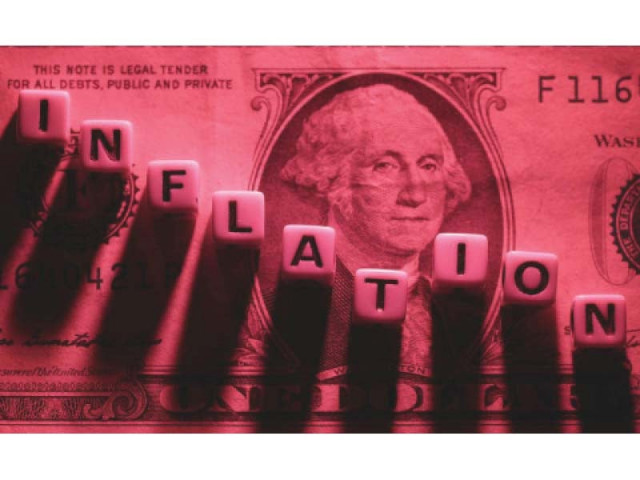‘SBP may hike policy rate further’
Report says survival without the IMF is not an option

Pakistan’s economic woes are not over yet. A local research house has anticipated that the central bank will hike its key policy rate even further by one percentage point to 17% and that by June/December 2023, the currency will gradually depreciate to Rs250/263 against the US dollar.
With the revival of the International Monetary Fund (IMF) programme becoming a question of survival for the country, the economic managers of the country will do all this, and more; either to convince the IMF to resume its ongoing loan programme worth $6.5 billion and/or to mitigate the challenges that will emerge after the country fulfils the stringent conditions laid out by the global creditor.
In the report titled ‘Pakistan Economy: IMF is here for the long haul,’ Arif Habib Limited (AHL) economists, Sana Tawfik and co-author, Farhan Rizvi said, “Survival without the IMF is not an option given the scale of the external financing needs, where majority of the (foreign) funding is linked to an IMF endorsement.”
The IMF’s Extended Fund Facility (EFF) program has once again fallen off track amid delays in completion of the ninth review of the domestic economy. The IMF has raised concerns over the fiscal slippages emanating from the combination of devastating floods and revenue shortfall, particularly from the petroleum development levy (PDL). There have also been concerns expressed over the accuracy of the budgeted flood rehabilitation expenditure.
“We expect a host of revenue and fiscal consolidation measures, including the imposition of General Sales Tax (GST) on petroleum products and the removal of GST exemptions, gas tariff hike, rationalisation of electricity tariffs, to get the program back on track and pave the way for release of the next tranche of $1.2 billion in February, 2023,” said the report.
“With the 10th review also due in early 2023, combining the two reviews remains a possibility, though this may further delay the IMF disbursement,” read the report.
Pakistan has a total external debt servicing obligation of $23 billion in FY23, of which $6 billion has been repaid and $4 billion have been rolled over. While the government has received commitments to fund the remaining amount, “delays in IMF’s ninth review have cast a shadow on those commitments.” Moreover, with further repayment obligations of $75 billion during the period between FY24-26, the external account remains in a tight spot. “The government estimates disbursements of $103 billion during the next three years to finance the repayments and the current account deficit using a combination of bilateral, private debt and multilateral flows.”
Unlocking these inflows, however, requires Pakistan to stay engaged with the IMF for the long term.
“We expect Pakistan to complete the current program with another program post general elections (second half of 2023), which will be essential to address both the long-term structural issues and external financing needs,” predicted the authors. The rupee-dollar parity has also been artificially managed. This has created a vibrant black market with a 10-12% gap between official and unofficial rates, hurting official remittances (10% decline in first five months of FY23).
“We don’t see these measures as sustainable and expect the SBP to gradually loosen administrative measures as the IMF’s ninth review concludes and other flows materialise. Hence, we expect the official rupee/dollar exchange rate to converge towards the unofficial rate and decline to 250/263 by June/Dec 23,” they explained.
“We expect headline inflation to remain elevated in the remainder of FY23 (December 22- June 23), at an average of 23.8%, mainly due to administrative measures. SBP shall maintain a tight monetary policy and raise rates by another one percentage point in the first quarter (Jan-Mar) of 2023 with gradual easing in FY24 as inflationary pressures start to subside,” the report added.
Fiscal tightening shall continue as the IMF program keeps policy makers in check with gas prices, PDL hikes and GST imposition. That said, given additional flood related expenditures and slower than targeted revenue growth, we expect a fiscal deficit of 5.9% of GDP in FY23, (above the 4.9% budgeted).
“In the backdrop of a tight monetary and fiscal policy and the impact of floods, we estimate FY23 GDP growth to fall to 1.78% (FY22: 5.97%),” the authors underlined.
Meanwhile, the Pakistani currency maintained a downtick, depreciating by a fresh 0.01% (or Rs0.03) to a new two-and-half-month low at Rs225.40 against the US dollar in the interbank market on Thursday.
Published in The Express Tribune, December 23rd, 2022.
Like Business on Facebook, follow @TribuneBiz on Twitter to stay informed and join in the conversation.



















COMMENTS
Comments are moderated and generally will be posted if they are on-topic and not abusive.
For more information, please see our Comments FAQ